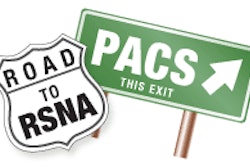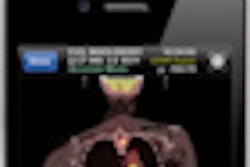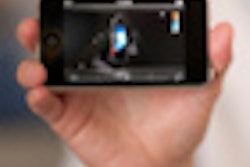Local radiology groups are under serious pressure, beset by declining reimbursement, hospital clients driving harder bargains, and national radiology firms that want to eat their lunch. Enter Lucid Radiology, a start-up debuting at this month's RSNA 2011 meeting that sees healthcare IT as a solution to the woes of local groups.
Lucid sprang from the experience of a large regional radiology group in Ohio, Riverside Radiology. Riverside has been well-known for its extensive adoption of healthcare IT, even developing its own software to improve the productivity of its radiologists who deal with multiple hospital clients operating different PACS networks. Riverside created Lucid Radiology to commercialize that software as the centerpiece of a standalone business, according to imaging veteran Clay Larsen, who is CEO of Lucid.
The software, called RadAssist, enables a radiology group to combine multiple worklists from disparate PACS networks, feed them into a single database, and view them via a single interface that Lucid calls the patient action window. This eliminates the need to access multiple IT systems with different log-ins and passwords, and enables radiologists to work more efficiently.
Radiologists using RadAssist can read images from any of the PACS viewers that their client site is using, and they also can access whatever dictation system the hospital employs. These applications can be launched directly from RadAssist. The software can also help balance a group's workload by routing imaging exams from a radiologist who might be overloaded to another one in the group with the same credentials and board certifications who is less busy.
In addition to RadAssist, Lucid is also offering healthcare IT consulting services to radiology groups. These services can include configuration and setup of RadAssist, but the company can also help groups that may not have kept pace with the digital revolution sweeping across medical imaging.
"A lot of radiology groups have underinvested in IT because they were used to having their client hospital buy the software for them," Larsen said. "As groups are trying to merge and grow, there are some of them that have not kept up to speed on building their own intellectual property in terms of IT resources."
For many of these groups, Lucid is offering what it calls "fractional PACS" -- PACS hardware and software from third-party providers that is custom-tailored to a group's needs. This approach enables groups to buy only the PACS components they need, such as viewing software, while other functions, such as image archiving, are handled by their hospital clients, Larsen said.
Lucid plans to exhibit for the first time at the RSNA 2011 meeting in Chicago later this month. The firm's business model is to tailor its pricing to the needs of customers, with some firms paying a management fee while others might pay on a per-exam approach.
Larsen believes that Lucid and RadAssist will help radiology groups cope with changing times by enabling them to offer higher quality to customers while also streamlining their group's own productivity.
"There are a lot of challenges that radiology groups have to be aware of, and this allows them to have higher quality and higher productivity together, rather than having one as a trade-off for another," Larsen said.



















